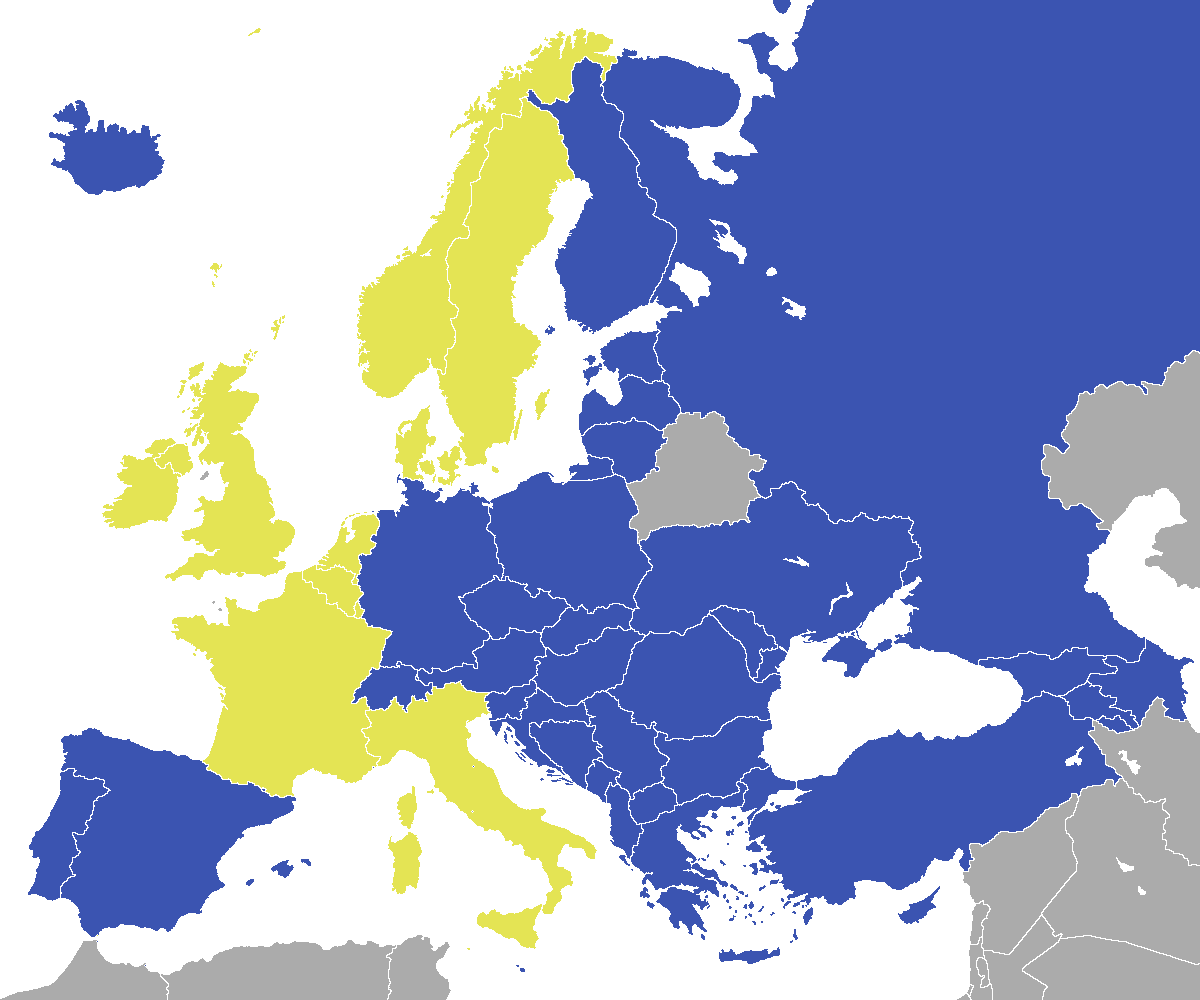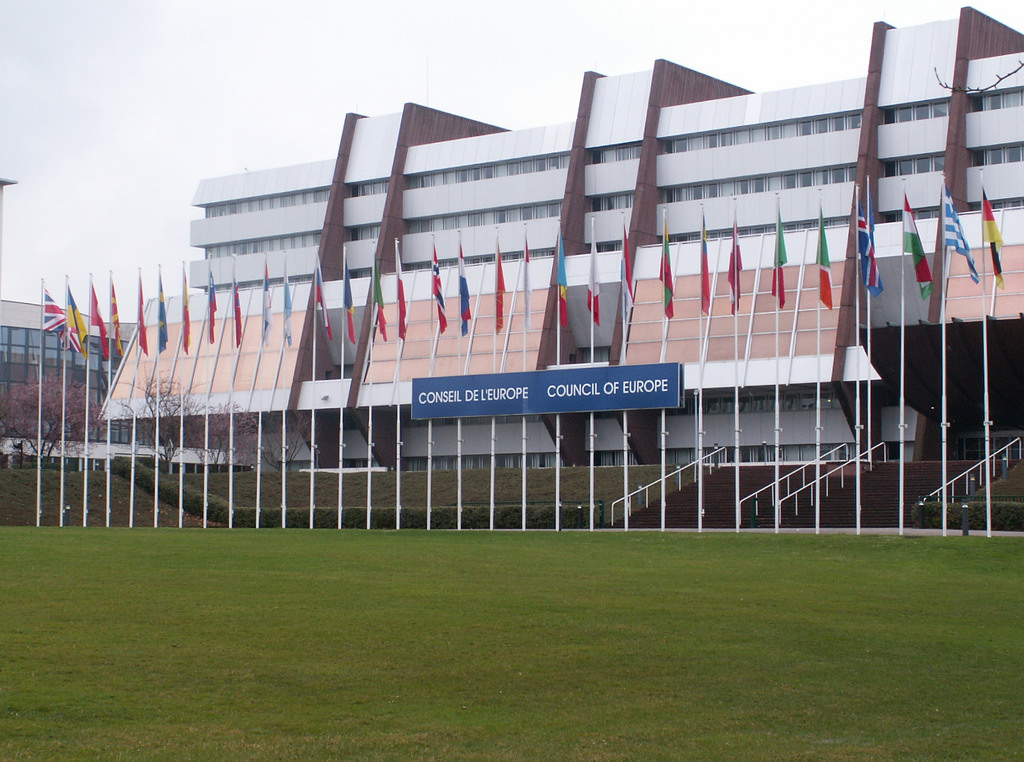The European Commission of Human Rights was set up 62 years ago today! Established in 1954, the Commission served as the first port of call for those who considered their human rights had been violated.
So what is all this about? I thought there was just the European Court of Human Rights?

Council of Europe nations, with founding nations in yellow.
Back in the 1950s, 12 European countries came together to form the Council of Europe. Its mission: to stop the atrocities of World War II from happening again and to protect people’s fundamental rights throughout Europe. Nowadays, the Council of Europe has blossomed into a 47-state organisation that promotes human rights, democracy and the rule of law and that covers 800 million people.
But how to go about ensuring respect for basic human rights and prevent the atrocities of war? That’s where the European Convention on Human Rights came in. A simple document listing individuals’ fundamental rights and freedoms, that countries have to respect.
To make sure people could enforce their rights (and make sure governments did not violate them) – the Council of Europe decided to create two bodies that people could go to – the European Court of Human Rights and the European Commission of Human Rights.
But if there was the Court then why would they need another body?

Well, the Council of Europe decided to set up a two stage system. They thought there would be a lot of applications and that the Court wouldn’t be able to work properly if it had to look at them all. So to make sure the Court heard the people that really needed it, the Commission basically acted as a filter and would help work out which applications were important. This meant the Court wouldn’t be flooded with trivial or political cases.
So how did it work?
The Commission was the first place people went to if they thought their rights had been violated. Before they were able to get their case seen by the Court, the Commission had to look at their complaint.
It was an important body that did many different things:
- It looked at a case and decided whether it was important enough to go to the Court.
- It worked out what exactly happened in a case
- It tried to persuade each side in a case to come to a friendly arrangement to resolve the matter
- It gave its opinion as to whether a person’s right had been violated.
Although it was a very important body, it didn’t have the same power as the Court. It couldn’t make proper decisions on cases like the Court does. It could only send a report to the Court to tell it what it thought of a case.
Sounds like it played an important role then! So why get rid of it?

The fact that people had to go to the Commission before they could go to the Court meant that the whole process took a very long time. On average it took 5 years to get a decision from the Court. It wasn’t able to properly protect people’s rights.
Also, over the years since the writing of the Convention, more and more states signed up. This meant a lot more people were trying to get their case to the Court. Applications to the Commission went from around 400 to around 2000 in just over 10 years. This clogged the system up which made the whole process take even longer.
The Commission was set up to help the people that really needed it to get access to the court, but in the end it just made it harder for them.
OK, so how does it work now?
Protocol 11 to the European Convention on Human Rights got rid of the Commission and created one permanent Court in 1998. This means that people can now go straight to the Court to get their case heard. This means that people’s rights are better protected as it takes a lot less time for the Court to hear a case.
Featured Image © Dominic edte , used under Creative Commons Attribution-NonCommercial 2.0 Generic Licence. Europe Map by JLogan – Own work by uploader, based on Image: Euro 2008.png, CC BY-SA 3.0. Council of Europe image © Antonio Bonnano used under Creative Commons Attribution-ShareAlike 2.0 Generic licence. Overworked man image © allispossible.org.uk used under Creative Commons Attribution-NonCommercial 2.0 Generic Licence.







